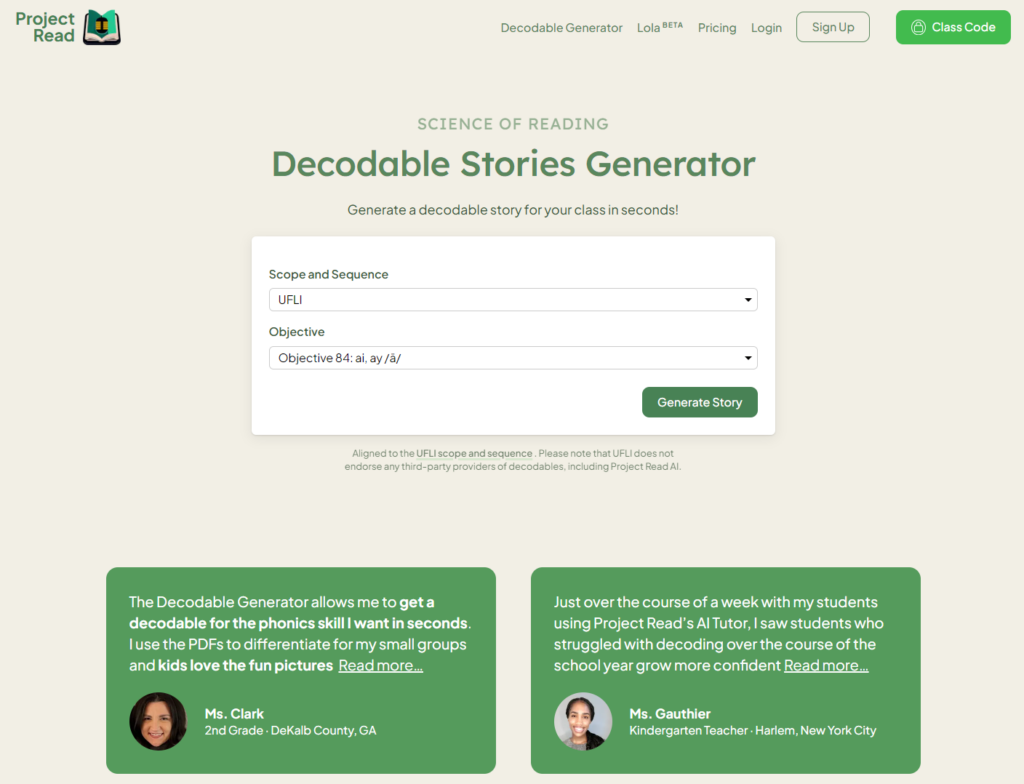The rapid advancement of artificial intelligence (AI) has introduced a new era in many sectors, with education being one of the most profoundly affected areas. In my quest to explore innovative tools that could enrich my teaching methods, I recently dove into Project Read AI, an intriguing AI tool designed to enhance reading comprehension and engagement among students. This blog post documents my journey with Project Read AI, from initial exploration to considering its potential in my future teaching career, and delves into the ethical considerations of using AI in education.
Discovering Project Read AI
Project Read AI is a platform that uses artificial intelligence to make reading more interactive and personalized for students. The tool is designed to improve reading comprehension by adapting content to the user’s reading level, providing instant feedback, and offering recommendations to challenge the reader gradually. What caught my attention was its promise to cater to individual learning needs, thereby fostering a more inclusive learning environment.
Upon visiting the website, I was greeted with a user-friendly interface that promised an easy setup for educators and learners alike. The process of creating an account and navigating through the platform was straightforward, allowing me to quickly move on to the more exciting part: exploring its features.

First Impressions and Features

The first feature that stood out was the Decodable Stories Generator. Project Read AI makes it quick and easy to generate fresh and applicable content, helping to keep students engaged while keeping the focused skills relevant. The options to Try with a Tutor, Add picture, and Regenerate are easily accessible and gives the learner agency over their literacy learning. Furthermore, Project Read AI grants the ability to customize the story beyond Scope and Sequence and Objective. The ability to fine-tune Story length, Custom words, and specific Skills, provides invaluable utility to educators.

On thing that stands out to me is the Try with Tutor module. As students read through a text, an AI analyzes the student’s reading in real-time to provide feedback and encouragement as they read. This immediate feedback loop helps identify areas where students might be struggling and encourages active reading.
Envisioning Its Use in My Teaching Career
Incorporating Project Read AI into my teaching arsenal opens up exciting possibilities. For instance, it could serve as a powerful tool for differentiated instruction. By providing tailored reading materials and assessments, I can ensure that all students, regardless of their reading level, receive the support and challenge they need to progress.
Additionally, the platform’s analytics feature offers insights into each student’s reading habits, strengths, and areas for improvement. This data could be invaluable for designing targeted interventions and personalized learning plans.
Ethical Considerations
While the potential of Project Read AI is vast, incorporating AI into educational practices also raises ethical considerations. One primary concern is data privacy and security. Ensuring that students’ reading data and personal information are protected is paramount. Moreover, relying too heavily on AI could inadvertently diminish the role of the teacher in guiding reading development and nurturing a love for literature. Balancing technology use with human interaction will be crucial.
Another consideration is ensuring equitable access. As AI tools become more integral to education, we must address the digital divide that could exclude students from underprivileged backgrounds. Ensuring that every student has access to these technological advancements is essential for fostering an inclusive educational environment.
Conclusion
My exploration of Project Read AI has been both enlightening and inspiring. Its capabilities to personalize reading experiences and support diverse learning needs are impressive, and I am excited about the potential it holds for my teaching career. However, moving forward with its integration into the classroom, I will be mindful of the ethical considerations, striving to use AI as a tool to complement, not replace, the irreplaceable human touch in education.
In the future, I hope to see further advancements in AI that continue to enrich the educational landscape, always with an eye towards fostering inclusive, engaging, and ethically responsible learning environments.
